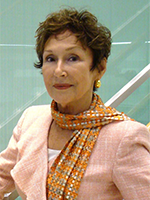This piece is excerpted from “The Super Age: Decoding our Demographic Destiny,” which publishes Jan. 18, 2022, from HarperCollins Publishers.
Author Bradley Shurman defines the “Super Age” as the way two megatrends—declining birth rates and the radical extension of human life (longevity)—are intersecting to form a super-megatrend that is creating a sharply different, vastly older and generationally diverse society than the one humanity has lived in before. This super-megatrend, more commonly known as “population aging,” is a seismic event that is upending and reshaping most of our social, political, cultural and economic norms, and it is doing so in the biggest and developed economies, as well as the smallest and emerging ones. It is leading us into a new era that I call the Super Age, a profoundly different period from any other in the history of the world.
Investing in Education and Training
Our approach to education, which is based largely on a model developed during the Middle Ages, does not function properly, especially against the backdrop of lengthening work lives. Education and training are increasingly important for older workers the farther away they get from their university degrees or apprenticeship programs.
Older workers tend to stick around longer than younger workers do. They are often regarded as more loyal, too. In the United States, for example, in January 2020, the median tenure of workers ages 55 to 64 (9.9 years) was more than three times that of workers ages 25 to 34 (2.8 years).
These realities will require a paradigm shift within enterprises to account for the fact that their education and training investments during the last five to ten years of a worker’s life will equal or exceed those of the first five to ten years. Such investments should be made throughout the life of an employee.
Education and training are particularly important in the public sector, where employees stay in their jobs nearly twice as long as employees in the private sector. According to Bureau of Labor Statistics data, in January 2020, public sector workers had a median tenure of 6.5 years, considerably higher than the median of 3.7 years for private sector employees. The fact that older workers tend to stay around longer means that public sector employees, especially older ones, have the potential to be great assets, but they need continuing education. It’s imperative that public sector employees have the tools they need to succeed both early on and later in their careers.
‘Failure to retain and recruit older workers may lead to generational blind spots that could manifest throughout products’ life cycles.’
Companies should also consider giving older workers pathways to employment through traditional internships, which are typically focused on college-age, graduate and doctoral students, as well as “returnships,” which are geared exclusively to workers who have left the workforce. Barclays, the British multinational investment bank and financial services company, launched Barclays Bolder Apprenticeships in 2015, making it the first UK company to extend such a program to people older than age 24. Barclays’ leadership recognized that the program was valuable to all people and should not be limited by age or social circumstances. Since its launch, the scheme has recruited more than 80 apprentices, growing the bank’s number of older apprentices from 4% to 20%—a remarkable feat and one that illustrates the demand.
Make no mistake, internships and returnships for older people are new, and few organizations are establishing them at this point. Data from the Department of Labor’s Registered Apprenticeship Partners Information Database System (RAPIDS) show that of apprentices employed from 2008 to 2019, fewer than one out of twenty- five was ages 50 or older. As more organizations promote their work and illustrate the return on investment, these programs will become commonplace in corporate environments.
Responsive to Reality
When I work with organizations that are interested in planning for their journey into the Super Age, I ask them to consider that many of the assumptions they may have about the current, near-future and long-term labor and consumer markets could be fundamentally wrong. They often need to challenge their conventional thinking about diversity, equity and inclusion and accept that generational differences and older workers might be assets, not liabilities.
Companies need to look at the foundation of their Super Age strategy as a three-legged stool: one leg is human resource practices; the second is research, design and innovation; and the third is marketing and communication. Wise organizations know that if they do not have generational diversity in their hiring and human resource practices, they will fail to build age-inclusive innovation and design teams, and their marketing and communications strategies may exhibit ageist bias. If even one of the three legs is wobbly and does not consider generational diversity, the strategy may falter. The failure to retain and recruit older workers may lead to generational blind spots that could manifest throughout products’ life cycles.
Despite its reputation as a Super Age–savvy company, at least in workplace and product design, BMW launched an ad campaign in November 2020 for its new sports utility vehicle, the iX, that seemingly attacked boomers for not liking the look of the design, suggesting that they were out of touch with modern-day styles and trends. It even went so far as to tweet, “OK, Boomer. And what’s your reason not to change?”
Companies that have embedded youth as central to their ethos, will likely struggle to consider age diversity ‘a thing.’
BMW doubled down on that approach with a global ad campaign in advance of the 2021 Consumer Electronics Show (CES). In the commercial, the all-new iX sport utility vehicle faces off against the classic 7-series from 2001. The two vehicles engage in an expletive-laden “conversation” that is riddled with ageist dog whistles leaning into perceived generational conflict. At best, the commercials were offensive; at worst, they stoked negative and counterproductive generational narratives.
These two cases suggest that BMW is unaware that the average household income of a new BMW car or SUV buyer in 2020 was $124,800 per year, that buyer’s average age was 56, and two-thirds of all BMW sales are to individuals older than age 55. Perhaps no one made the connection that the iX was manufactured at the plant in Dingolfing that is home to BMW’s Super Age workforce strategy and some of the company’s oldest and most skilled employees.
BMW sales dropped in 2020, and it is impossible to say if there is a direct connection between the sales numbers and the overtly ageist ad campaign. However, there is a correlation, and the move by the German automaker to go after older customers in a pejorative way, not once but twice, was an avoidable error. Unfortunately, the BMW example is an all-too-familiar cautionary tale of an organization that is working toward a cohesive Super Age strategy only to deliver a self-inflicted wound. This story is a warning to be conscious of the pitfalls that exist in this new era. Businesses need to recalibrate across the board and make sure that they are Super Age friendly in all aspects of their work.
If some workplaces and businesses are so intrinsically ageist and cannot see into the future, is there anything that can be done to change them from within? The short answer for many is yes, but the path is long and fraught with the challenges that have been faced by other marginalized groups in enterprise-wide diversity, equity and inclusion strategies. Some companies, particularly those that have embedded youth as central to their ethos, will likely struggle to consider age diversity “a thing.”
Adapting to the Super Age in the workplace requires a shift in organizational mindset, and it must occur in every component of the organization, much like current diversity, equity and inclusion strategies for historically marginalized groups. The first and most logical step for enterprise leaders to tackle is to audit for demographic change, so they understand how it is influencing their companies’ bot tom line. Once they understand the economic benefits of responding to age diversity, they can better respond to its challenges and implement incremental change and capital improvements that will take advantage of the opportunities of a new workplace dynamic and an expanding customer base.
Bradley Shurman is founder and CEO of The Super Age—a global strategic research and advisory firm helping public and private organizations understand the challenges and harness the opportunities of demographic change, with a focus on population aging.









